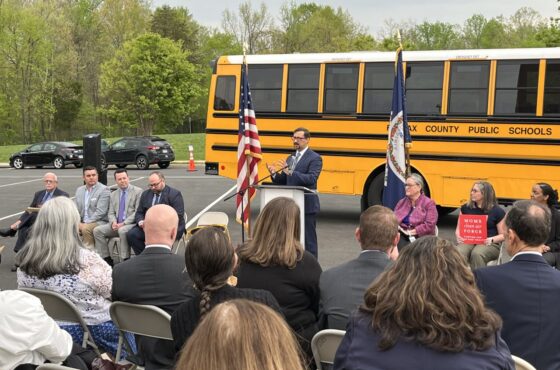ENGOs urge Ag Sec Vilsack to correct the record on biomass
Published by the Natural Resources Defense Fund
NRDC and our allies took the unusual step of sending an open letter, dated July 13, 2016, to U.S. Secretary of Agriculture Tom Vilsack challenging the agency on a series of factually inaccurate and misleading claims about the benefits of biomass energy. The claims were made in a March letter Secretary Vilsack sent to U.K. Secretary of Energy and Climate Change, Amber Rudd, extolling the virtues of U.S. wood pellet exports to the United Kingdom. Secretary Vilsack’s letter is inconsistent with the science, runs counter to the advice of Environmental Protection Agency’s own scientific advisers, and he should correct it immediately.
It’s easy to understand why Secretary Vilsack sent the letter. The U.K. is the largest purchaser of U.S. wood pellets by a mile—overwhelmingly sourced from the forests of the U.S. Southeast. According to the U.S. Energy Information Administration, in 2014, almost three-quarters of all U.S. wood pellet exports went to the U.K., mainly for the purpose of generating electricity.
But whatever the motive, the letter is wrong on the facts. Most egregiously, the letter claims categorically that “biomass generation provides significant greenhouse gas benefits to the U.K.” The claim that biomass automatically creates greenhouse gas advantages has been repeatedly discredited, both by a growing stack of scientific studies in the U.S., and by an analysis by the UK’s own Department of Energy and Climate Change.
In reality, biomass energy is often dirty and destructive—in particular when whole trees and other large-diameter wood is used as fuel. Just like coal and other fossil fuels, when wood is burned for energy, its stored carbon is released to the atmosphere. But trees are approximately half water by weight, so they contain less potential energy per unit of carbon emissions than coal and other fossil fuels. To generate the same amount of electricity from trees as from fossil fuels, many more trees have to be burned, resulting in more carbon dioxide emissions at the smokestack. At the same time, if left alone, forests will continue to grow and sequester carbon. Sure, trees can grow back, but it takes decades (or even a century) for them recapture enough carbon to make this kind of bioenergy production carbon beneficial. In the meantime, we’ve made climate change worse at a time when we need to be rapidly cutting our carbon pollution.
NRDC analyzed the carbon pollution from burning wood pellets from southeastern forests to produce electricity and compared those emissions with those from burning coal and natural gas. Our analysis shows that if the wood pellets are made from whole trees—even in relatively small proportions—they will emit carbon pollution comparable to or in excess of fossil fuels for more than five decades.
The Vilsack letter also claims that “demand for wood pellets promotes U.S. forest growth and reduces risks to U.S. forests.” In fact, harvesting forests for fuel adds pressure to Southeastern forests, which are some of the most biodiverse and valuable forests in the world and also ground zero for wood pellet manufacturing and export, increasing the likelihood of forest conversion. As we discuss in our letter, an NRDC study found that millions of acres of the region’s vulnerable bottomland hardwood forests—which provide critical habitat to a host of rare species and deliver important ecosystem services to local communities—are the in bull’s eye of existing and proposed wood pellet mills’ potential sourcing areas and are at increased risk of being harvested for pellet feedstock.
Climate change is an urgent threat and we must do everything in our power to combat it. One of our most potent weapons in that fight is the expansion of our forests. Today, we rely on our forests to continue to grow and offset roughly 13 percent of U.S. annual, economy-wide greenhouse gas emissions. Burning forest biomass for energy threatens that expansion. We simply cannot afford to raid that forest “carbon sink”, especially for an industry that immediately spews all that carbon into the atmosphere. Doing so risks the ability of the U.S. to achieve its emissions reduction targets under the Paris climate agreement.
EPA continues to oversee a science-driven process to determine how to account for carbon emissions from biomass energy—a critical step in ensuring that we keep high-carbon biomass off the table and focus our investment in energy efficiency, solar, wind, and other truly clean energy technologies. The agency has already been advised by its Science Advisory Board panel that not all biomass can be treated as categorically carbon neutral or even carbon beneficial. Just this week, the Obama Administration issued its 2016 Statement of Administration Policy, saying it “strongly objects” to interference with this process and efforts that would compel EPA to disregard the science.
The claims put forward by Secretary Vilsack in his effort to promote the U.S. wood pellet industry puts him out of step with the science on biomass. Secretary Vilsack should know that our forests aren’t fuel.
Read the full article at: https://www.nrdc.org/experts/sasha-stashwick/engos-urge-ag-sec-vilsack-correct-record-biomass




